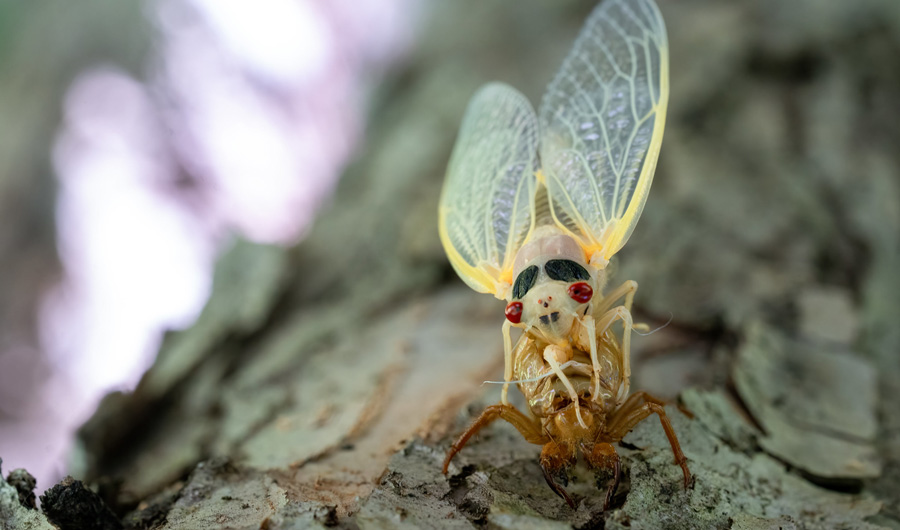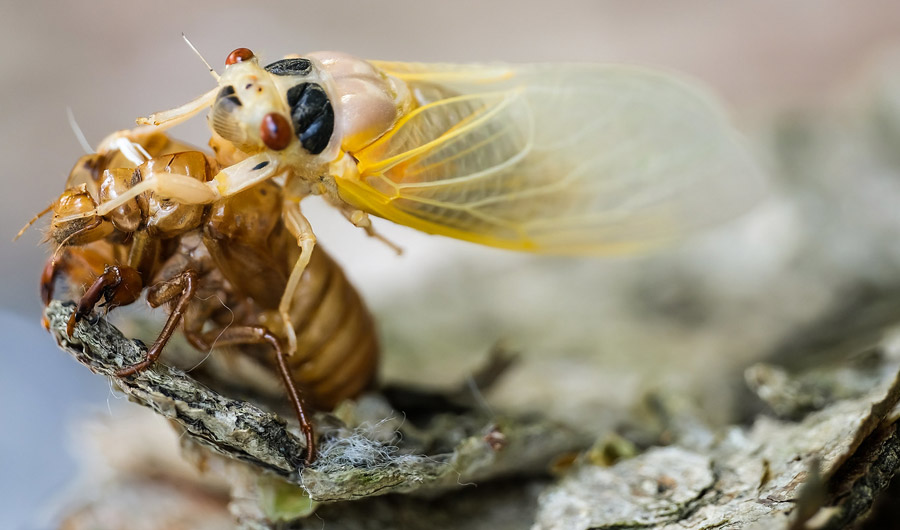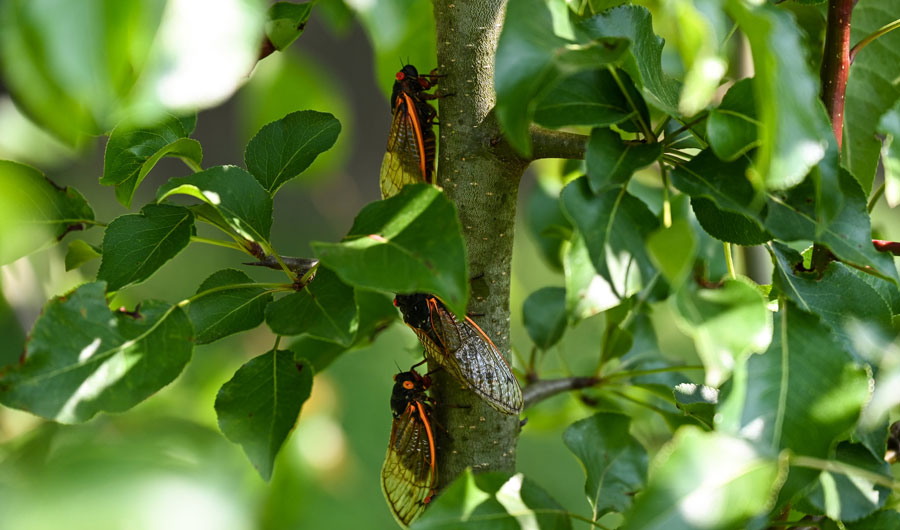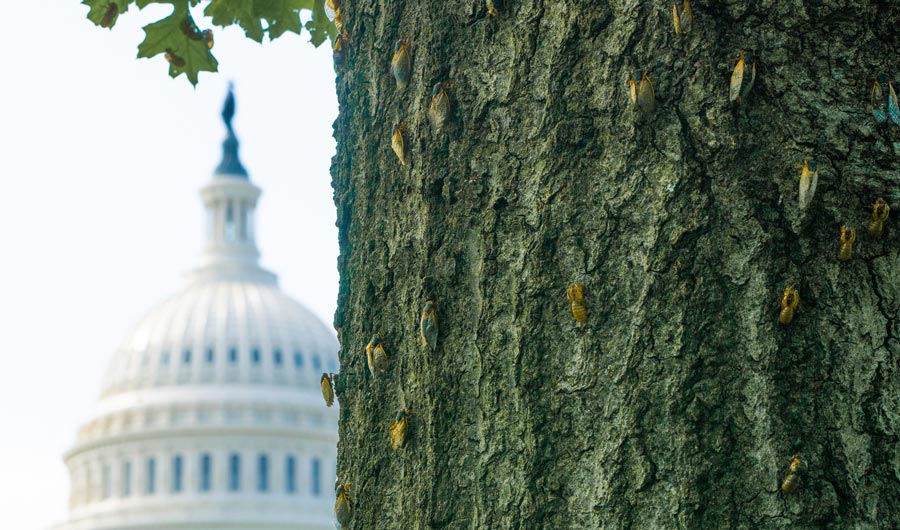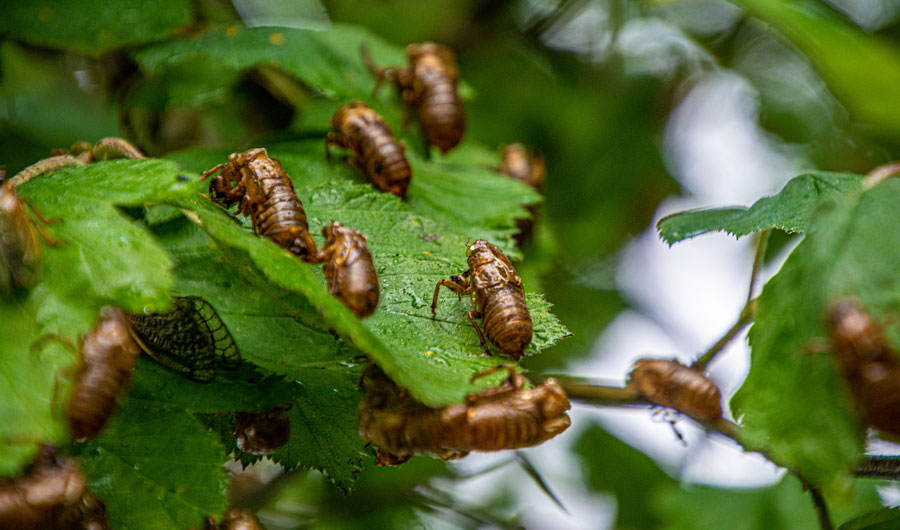The Brood X Cicadas Have Arrived
Photographers snapped images of the red-eyed insects emerging after 17 years underground.
(Inside Science) -- Over the past few weeks, billions of cicadas have been appearing in backyards and gardens across the mid-Atlantic United States. Every 17 years, three species of periodical cicadas in this region emerge from their underground world to molt, eat, mate and lay eggs. In the barrage, people have been spectating, snapping pictures, and even stirring cicadas into their sushi.
For the next several weeks, cicadas will sing their cacophonous songs. Then the adults will die, leaving the world to the next generation. The youngsters will hatch from eggs in the branches and crawl into the ground, not to emerge for almost two decades.
Filed under

